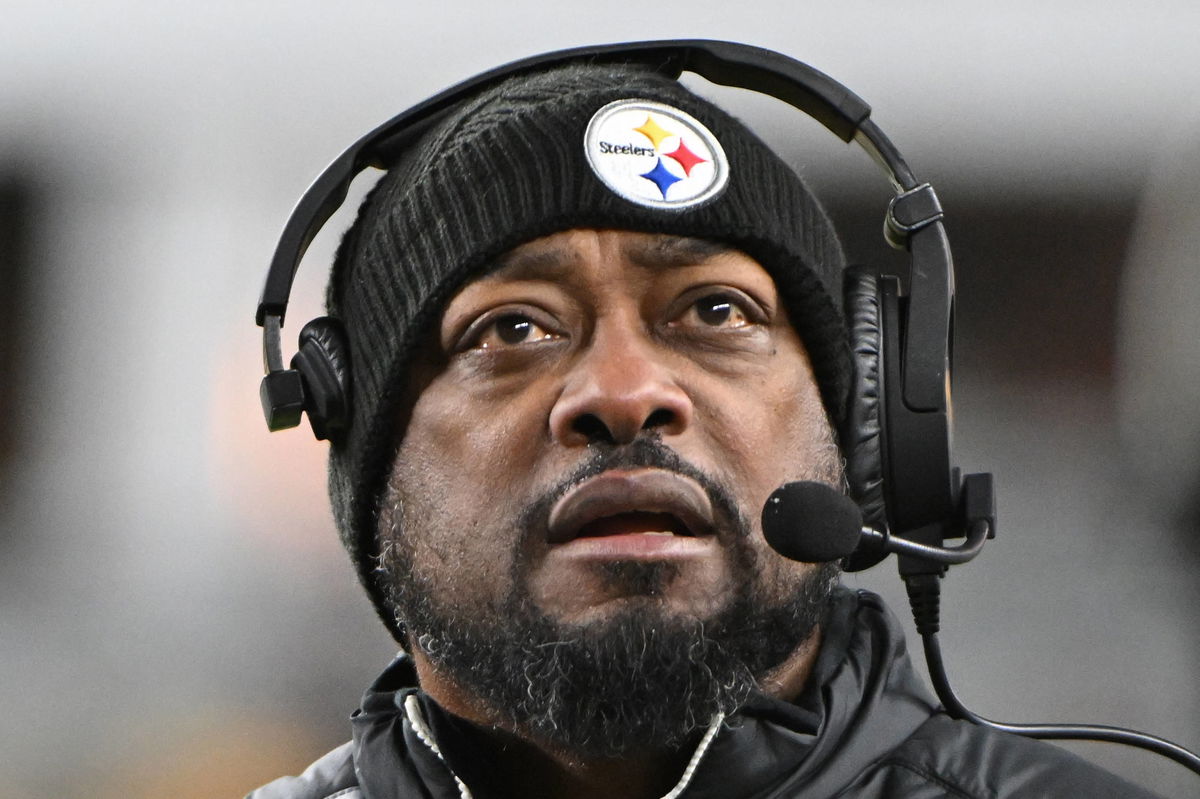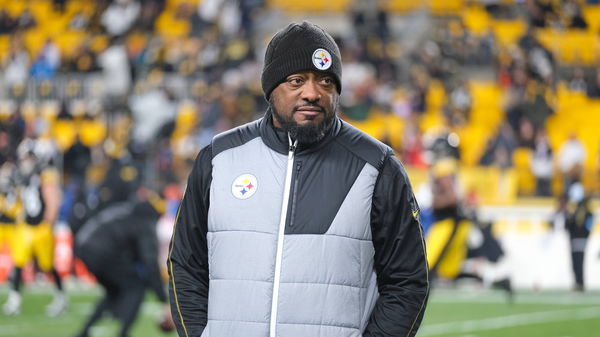
Imago
NFL, American Football Herren, USA Cincinnati Bengals at Pittsburgh Steelers Jan 4, 2025 Pittsburgh, Pennsylvania, USA Pittsburgh Steelers head coach Mike Tomlin looks at the scoreboard against the Cincinnati Bengals during the second quarter at Acrisure Stadium. Pittsburgh Acrisure Stadium Pennsylvania USA, EDITORIAL USE ONLY PUBLICATIONxINxGERxSUIxAUTxONLY Copyright: xBarryxReegerx 20250104_gma_ii9_0467

Imago
NFL, American Football Herren, USA Cincinnati Bengals at Pittsburgh Steelers Jan 4, 2025 Pittsburgh, Pennsylvania, USA Pittsburgh Steelers head coach Mike Tomlin looks at the scoreboard against the Cincinnati Bengals during the second quarter at Acrisure Stadium. Pittsburgh Acrisure Stadium Pennsylvania USA, EDITORIAL USE ONLY PUBLICATIONxINxGERxSUIxAUTxONLY Copyright: xBarryxReegerx 20250104_gma_ii9_0467
Imagine losing over $700,000 in a single football season. Not to bad investments or locker room drama, but to cold, hard NFL fines, all in the name of tactical grit. That’s the price the Steelers paid last year, the kind of check that makes even seasoned billionaires like Art Rooney II take notice. For the crowds waving Terrible Towels and analysts scrutinizing every snap, the number isn’t just a footnote; it’s a marker of how far the Steelers are willing to go under Mike Tomlin’s relentless regime. For the Steelers, that six-figure sum translates to the delicate balance between winning ugly and falling short when it counts most.
Watch What’s Trending Now!
Mike Tomlin has long been the face of the ‘never blink’ mentality. He’s the coach who trusts in preparation and loves his guys playing on the knife’s edge. That philosophy yielded something unique last season. The Steelers handed over a jaw-dropping $731,828 in fines, ranking them third in the league’s most penalized teams in terms of cash loss. But these weren’t just normal infractions. The Steelers committed a series of so-called tactical penalties, those hands-on, late-game fouls that swung yardage and potentially the momentum.
Now, here’s what stings less than the fine print: winning. According to ESPN’s data, Pittsburgh won 70% of games in which they committed these penalties, compared to just 52% when playing clean. It’s a paradox for Mike Tomlin: break the rules with purpose, and you’re more likely to walk away victorious. “Maybe that is generally a winning strategy,” noted Dr. James Cochran, the statistician behind ESPN’s analysis, when asked why teams often emerge better off when living on the edge.
ADVERTISEMENT
For Coach Tomlin and the Steelers Nation, this willingness to play (and pay) isn’t an accident. From the Legion of Boom Seahawks to hard-nosed AFC North Football, teams have long used late-game fouls as a lever, trading yards for time, momentum, or field position. Warren Sharp, an NFL analytics expert, describes it perfectly: “There’s definitely times when you’re playing the clock more than you’re playing anything else in certain games. – If you can commit a penalty that prevents the other team from having a bigger explosive play … they don’t put the time back on the clock. – it’s only 5 yards closer and it moves the ball from their 25 to their 30, you’d trade that all day.”

Imago
NFL, American Football Herren, USA 2025: Steelers vs Bengals JAN 04 January 04, 2025: Head Coach Mike Tomlin during the Steelers vs Bengals in Pittsburgh, PA. Jason Pohuski/CSM/Sipa USACredit Image: Jason Pohuski/Cal Media/Sipa USA Pittsburgh Pa USA NOxUSExINxGERMANY PUBLICATIONxINxALGxARGxAUTxBRNxBRAxCANxCHIxCHNxCOLxECUxEGYxGRExINDxIRIxIRQxISRxJORxKUWxLIBxLBAxMLTxMEXxMARxOMAxPERxQATxKSAxSUIxSYRxTUNxTURxUAExUKxVENxYEMxONLY Copyright: xCalxSportxMediax Editorial use only
What’s fascinating is that these fines are more than just numbers on a ledger. They’re symptoms of strategic intent that could continue in the 2025 season as well. As NFL officiating analyst Joe Gibbs wrote recently, “The Steelers offense was the No. 1 beneficiary of roughing the passer penalties [in 2024]. With Aaron Rodgers at quarterback, expect this to continue, as he has received his fair share of these calls over the years.” Yet it’s not free money for the NFL. Every time Tomlin instructs his defense to jam receivers or play hyper-physical, it’s not just an on-field statement; it’s a budget line item. The fines pile up, sending a message to Art Rooney II and the management: winning ugly has its cost.
ADVERTISEMENT
Last season’s $731,828 in fines wasn’t the league’s highest, but it was enough to sting. Especially when paired with the Steelers’ continued playoff disappointments. For a franchise priding itself on discipline and historic success, the losses on both fronts, financial and postseason, tend to pile up quickly. But if violating the rulebook is a ticket to more victories, why did these bruising stars still fall short in the postseason?
ADVERTISEMENT
Playoff blues: Mike Tomlin’s streak of heartbreaks
The contrast for the Steelers is sharp: regular-season swagger, postseason struggle. And it’s a gap the numbers alone can’t erase. Tomlin’s risk-heavy game plans might yield more wins on paper, but they’ve yet to translate into a return to Super Bowl Sunday. Despite the edge, Pittsburgh has repeatedly flamed out in the playoffs, raising questions about whether living by the flag means dying by it, too. Dean Blandino, former NFL VP of officiating, often counseled coaches on the limits of penalties in securing victories. “I always said that to coaches. I was like, ‘Listen, you can have a year where you were on the wrong end of a bunch of calls.’ – Over time, it tends to even out. It just does.”
For Pittsburgh, that evenness hasn’t brought postseason glory. Instead, they are faced with mounting frustration with early exits and a narrative shift from gritty victors to reckless runners-up. Coach Tomlin understands the frustration flowing through Steel City and owns up to it as well. As he noted once amid a losing streak, “I don’t make excuses for failure, I own it. But I also feel like I’m capable. As long as I’m afforded an opportunity to do that. I’ll continue.” But there have been many opportunities, and the numbers tell a different story.
Top Stories
Kansas City Reporter Erupts Against Travis Kelce for Choosing $100 Million Podcast Over Chiefs

Former Rams & Panthers Star Arrested for Burglary in Mississippi

Colin Kaepernick’s Wife Questions NFL Logic After Colts Sign 44-Year-Old QB Philip Rivers Over Kap

Former Dallas Cowboys QB Offers to Unretire for Colts With Strong Comments on Philip Rivers

NFL Makes Decision Against Joe Burrow & Bengals With Week 16 Announcement

Regular-season wins are always locked in for Mike Tomlin. But the playoff intensities are a different matter. Throughout his Steelers reign, Tomlin has seen a total of 19 playoff games, with two Super Bowl appearances and one win. But that playoff record reads 8 wins and 11 losses. Last season, the Steelers went to the wild-card round with a 4-game losing streak and were knocked out of contention by the Ravens. It’s interesting to note that the Steelers haven’t been able to advance past the wild-card since back in 2017. Can the Steelers finally make a turnaround from the ghosts of playoffs past? With Aaron Rodgers leading the charge, there’s hope. But whether that hope turns into a reality or not is something we’ll only know at the end of this regular season.
ADVERTISEMENT
ADVERTISEMENT
ADVERTISEMENT
ADVERTISEMENT

